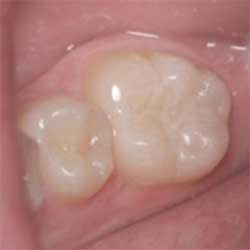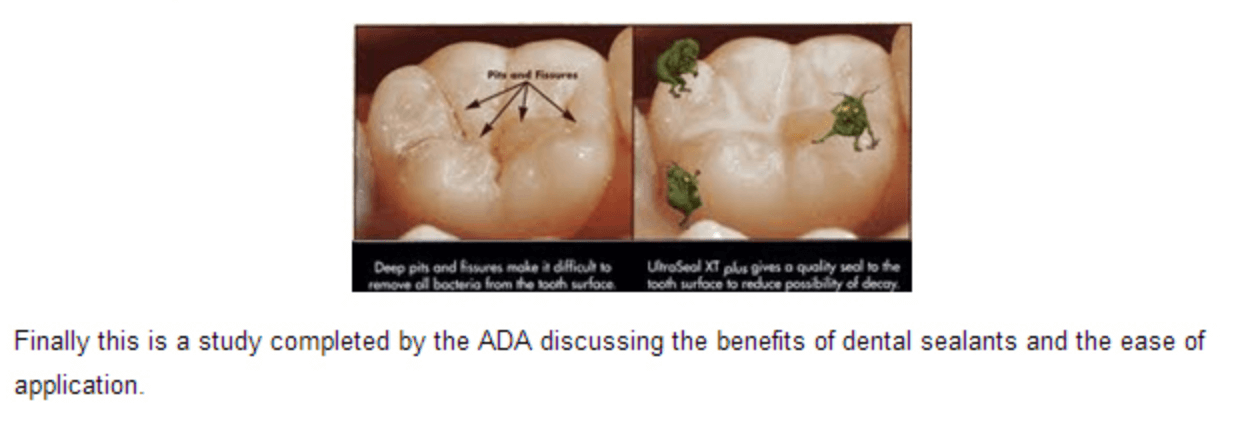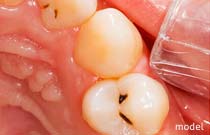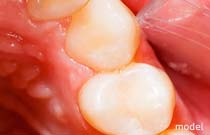Visit Our Office 77 Rolling Oaks Dr., Thousand Oaks, CA 91361(805) 379-5262
Dental Sealants
Dental Sealants are plastic material that is placed in the grooves of the posterior teeth to prevent decay. Around the age of 6 and 12, the first and second molars erupt. These teeth are very far back and have intricate deep pits and grooves that are very hard to clean and thus act as a food trap. These grooves are the most susceptible to new cavities.
Although brushing and flossing help remove food particles and plaque from smooth surfaces of teeth, toothbrush bristles have a very difficult time reaching all the way into the depressions and grooves.
Deep Grooves
 An example of the deep grooves can be seen in the following image.
An example of the deep grooves can be seen in the following image.
Dental Sealants are a very easy procedure to fill these grooves with a plastic material thereby preventing decay. After the tooth is cleaned and roughened with a gel, the sealant is painted into these grooves and acts as a protective barrier.
As long as the sealant is present on the tooth, it acts as a deterrent to food and plaque getting trapped there. Sealants can protect teeth from decay for a few years, but they need to be checked for chipping or wearing at regular dental check-ups. The following image shows the image of a tooth before and after the placement of a sealant.
ADA Approved
Finally this is a study completed by the ADA discussing the benefits of dental sealants and the ease of application.
“Have you ever noticed how uneven the chewing surfaces are on your back teeth? That’s because these teeth (your molars) have pits and grooves. Though these pits and grooves help grind food, they also can make it easier for cavities to develop.

Cavities occur when acid breaks down the hard, protective enamel surface of the tooth. Plaque is a thin film of bacteria that coats everyone’s teeth all the time. When you eat, the bacteria in plaque produce the acids that can break down tooth enamel. Brushing your teeth and cleaning between them helps remove the plaque and food particles that can cause this breakdown, so these are 2 important things that you can do to reduce your risk of developing decay. However, it is difficult to clean inside the pits and grooves on your molars with a toothbrush. Luckily, sealants can protect your teeth from decay by filling in those pits and grooves, keeping food and plaque out. Sealants may even stop very early stages of tooth decay from going on to form a cavity…”



